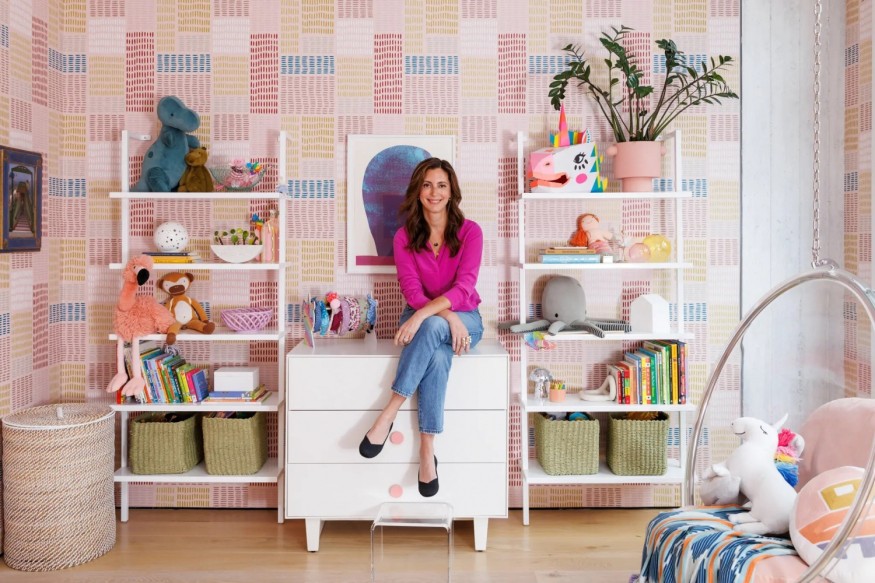Susana Simonpietri’s Guide to Organizing and Designing a Child’s Room

Creating a child's room is a fun project that involves using bright colors, entertaining accents, and unique patterns. The creative director of Brooklyn-based interior design company Chango & Co., Susana Simonpietri, infuses her designs with a youthful energy that inspires parents globally through social media sharing. But creating a practical and visually appealing kids' room requires more than choosing gorgeous wallpaper- it also requires planning for storage. In this piece, we examine Simonpietri's suggestions for designing a room that accommodates a child's surplus of possessions and offers useful tools for organizing.
Embrace the Abundance
Children come with a lot of stuff, and expecting them to keep everything tidy is often futile. Simonpietri's key advice is to embrace the abundance but provide management tools. Here's how she put this philosophy into practice in her 4-year-old daughter Lola's room.
Open and Closed Storage
One of the secrets to maintaining a visually appealing child's room is balancing open and closed storage. Simonpietri suggests incorporating a changing table or dresser in the center of a storage wall, flanked by shelves on either side. In Lola's room, a dresser from Oeuf with white metal wall-mounted bookshelves from CB2 creates a harmonious blend of closed and open storage, keeping the room organized and visually appealing.
Baskets on Lower Shelves
For quick and easy cleanup, Simonpietri recommends the use of baskets. These are perfect for gathering miscellaneous toys and art supplies. Placing them on lower shelves allows children to see inside and easily access their belongings without the risk of spills. Larger baskets with lids can serve dual purposes, such as acting as a laundry hamper and adding functionality and style to the room.
Also Read : Emmanuelle Moureaux's '100 Colors Butterflies' Paints an Emotional Tapestry at Art of Absolue Exhibition
.
Sort Books by Size
Children's books, with their colorful covers and spines, can serve as decorative elements when organized thoughtfully. Simonpietri suggests arranging books by height in descending order on lower shelves. This adds visual appeal and makes it easy for children to choose books for themselves. As children grow, books that are no longer age-appropriate can be replaced, ensuring a continual refresh of the space without sacrificing storage.
Subdivide Dresser Drawers
Drawers are a fantastic way to hide clutter, but subdividing them enhances organization. Simonpietri uses small-scale bins that can be reconfigured over time to accommodate changing needs. The dresser drawers initially stored sheets and diapers in Lola's room, but as she grew older, they were repurposed for pajamas, socks, and accessories. The top of the dresser becomes a personalized space for organization tools, such as a jewelry box or display case for collectibles.
Plan for Future Keepsakes
Children accumulate keepsakes over time, from trophies to photos and certificates. These items may not be accessed daily, so Simonpietri suggests allocating higher shelves for their storage. In Lola's room, a small silver box serves as a designated place for baby teeth, ensuring that sentimental items are preserved without cluttering visible spaces.
Use Toys as Decorative Accessories
Not all toys are meant to be constantly played with. Simonpietri suggests utilizing display areas for toys that are admired more than actively used, such as assembled Lego sets or oversized stuffed animals. In Lola's room, a large cardboard unicorn mask and big stuffed animals find their place on higher shelves, becoming decorative elements rather than hidden clutter. Including the child in the process of organizing gives them the ability to keep things organized.
A child's room must be creatively designed to balance functionality and style. The way that Susana Simonpietri embraces the multitude of items that kids have while offering practical storage options is a great resource for both parents and designers. By incorporating open and closed storage, utilizing baskets, organizing books thoughtfully, subdividing dresser drawers, planning for future keepsakes, and using toys as decorative accessories, you can create a space that looks beautiful and fosters a sense of order and responsibility in your child.












